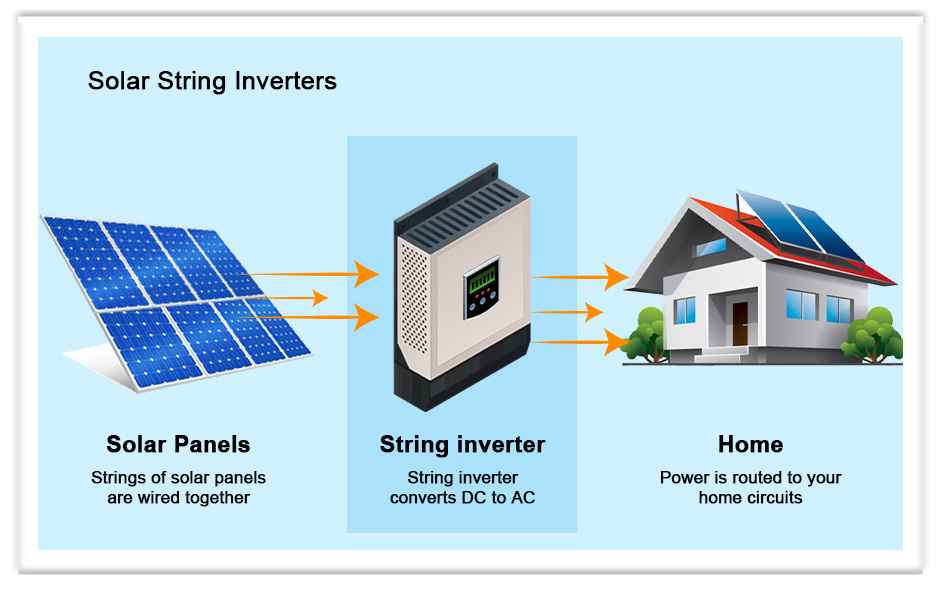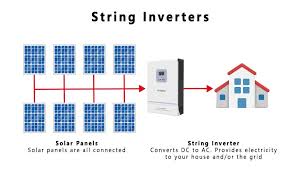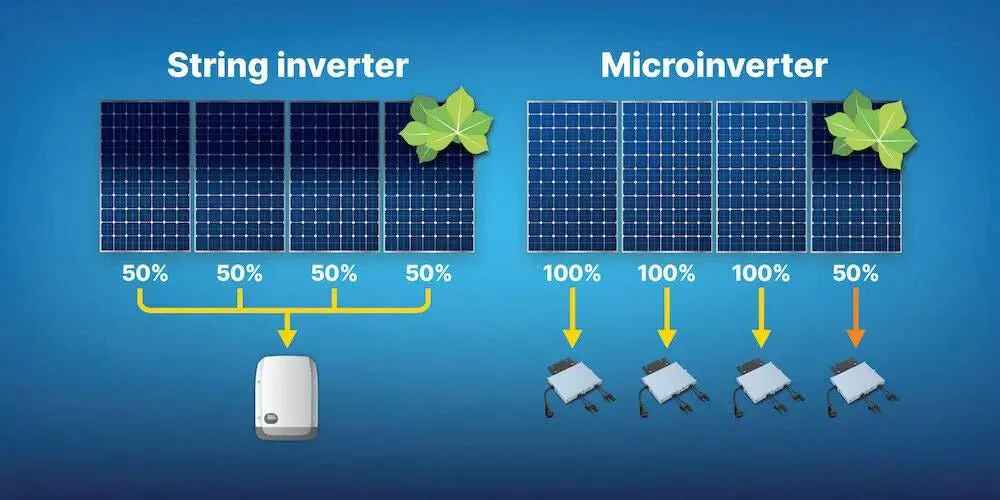What is a String Inverter? - Powering Ireland’s Solar Future!

It’s one of the most frequently used devices in solar energy systems, manages for converts the direct current (DC) produced by solar panels into alternating current (AC) that can be utilized in homes and businesses. String inverter is named as such, due to the connection of solar panels together like a stream of lights, where many panels become electrically susceptible to one another, and the combined DC electricity is fed into a single inverter..
How Does a String Inverter Work?
With a series of solar panels, a string inverter functions by taking DC power that has been sourced and converts it to AC power. Electricity is directed out of each panel in the string into an inverter, and that inverter synchronizes the electricity with your grid in voltage and frequency. It makes a string inverter suitable for the homestead and small commercial solar systems with all the panels facing in the same direction and exposed to equal sunlight.
Best Uses of a String Inverter in Solar Systems
A string inverter is best utilized in applications such that panels are of consistent orientation and shading. The performance of all the panels is dependent on the most inefficient panel because all the panels are connected in a string. Because of this cause, in the open and unshaded or shadeless areas, string inverters perform best. They are cost-effective, economical to maintain, and reliable.
Can I utilize a String Inverter for My Home Solar System?
Absolutely, a string inverter is a great option to use with your home solar power system as long as your roofs/installation points get a clear and constant access to sunlight. String inverters are typically preferred amongst the householders since they are easy to install and even less expensive to purchase in comparison with the microinverters. Nevertheless, when your roof is partially shady at various times of the day, it may require panel optimizers or other possible solutions.
What are the Advantages of a String Inverter?
Here, I explain the best 5 advantages of a string inverter. Let’s explore it.
-
Cost-Effective - Typically less expensive as compared to microinverters.
-
Established Technology – Well-established and well-proven in the solar industry.
-
Simple Maintenance - Modifications- minimized the number of inverters to repair or replace.
-
There is efficiency - efficiency under standard light situations.
-
Scalability - It can be used with both small to medium-sized installations.

How to Choose the Best String Inverter for Your Needs?
In the selection of a string inverter, you must take into consideration:
-
System Size - Balance the product of the inverter to the ratio of the sum of the solar panels.
-
Efficiency Rating - Get models that have a more than 95 percent efficiency rate.
-
Warranty – Longer warranties (10–15 years) indicate permanence.
-
Brand Reputation – Do not be afraid of known and tested manufacturers.
-
Smart Monitoring - A few innovative inverters of strings provide application-driven monitoring of the performance.
Best Maintenance Practices for a String Inverter
-
Make the unit clean and non-dusty.
-
There is enough ventilation to avoid overheating.
-
Make an appointment for professional visits every year.
-
Observe performance via linked apps in the event that there is one.
String Inverter vs. Microinverter - Which is Better?
Although the string inverters are cheaper and easier to install, the micro inverters ensure that every panel can accept the shaded curvy roofs due to the independent functioning of each panel. Depending on your roof design, shading problems, and budget, you decide what type to use.

FAQ’s
Q1. What is a string inverter, and the difference with a microinverter?
A string inverter takes the power output of many panels at a single point, whereas a mini inverter is placed on every panel.
Q2: What is the life of a string inverter?
The majority have a lifespan of 10-15 years when well taken care of.
Q3: Is it possible to substitute a microinverter with a conventional string inverter?
Yes, but it is to be rewired, and it costs extra.
Q4: Where should the installation of a string inverter be best?
Put it in a cellar, dusty, windowed place where it is exposed to no sunlight.
Q5: Would an inverter string be able to operate off the grid?
That would be only when combined with battery storage and enabled off-grid.
Conclusion
So what is a string inverter? It is the center of a majority of the solar systems because it gives an affordable and safe method of harnessing solar power for use. A string inverter maximizes uniform sunlight conditions and provides simplicity, high efficiency, and reliability. When reaching that decision in your solar installation, it is worth knowing about its advantages, constraints, and good practices.





